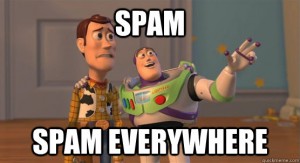— November 30, 2018

We’ve worked with many start-ups this past year and have had an opportunity to experience first-hand what has worked and what hasn’t. A strategy is undoubtedly important; without a solid start-up marketing strategy, you’re not positioning your new product in the best possible way.
What we’ve seen though is that many, if not most, entrepreneurs are spending hours of time and tons of budget creating their product or service, but for the most part ignoring the marketing component, or leaving it to the last minute. Or, worse, trying to do it themselves.
The reality is that you need both: a great product and a great start-up marketing strategy to get off the launch pad. Following are some of the critical elements to consider in developing a winning marketing strategy.
Brand Development/Strategic Positioning
Your brand is everything. Your name, logo, and website are often the first images potential customers will see. Your brand and marketing messages should be consistently and effectively telling your story, and why you’re different from the competition.
Consider what you want your audience to think of when they see the branding you’ve spent so much time creating. The image of your company that pops into their minds — that’s your brand. And the only way to stand out is to make sure your brand story conveys what makes your product so unique.
Brand Voice
Everything your potential buyers come into contact with should articulate your story and what differentiates your brand from the competition. To remain consistent across all platforms, identify how you want to present your brand voice – the tone, focus, and authenticity. Are you light and funny or serious? Are you luxurious and discriminating or warm and welcoming? Does your content focus on your specific buyer personas, or does your message get muddled?
Believe it or not, your audience will notice when someone new posts information to your account if that person is not fluent in your brand voice.
Create Your Brand’s Buyer Personas
You already have a good idea of who will buy your products and services, and if you don’t, you may need to back up a few steps. Knowing your target audience will get you started. For instance, will your buyers primarily be Millennials? Moms? Baby Boomers? Will your brand speak more to men than women, or vice versa?
It’s not enough to just have a general idea of the audience you are trying to reach. To convince and convert those who come into contact with your brand, you also must know enough about them that they feel as though you’re speaking directly to them with your content. In other words, it’s not enough to know who is buying; you also why they’re buying—and build your content accordingly.
Of course, you need to understand the basics of who your customer is—their gender, marital and employment status, etc. But to reach your buyers you must tap into the thought process that precedes a purchase—the psychographic dimensions that define your target audience. In other words, what are their lifestyle behaviors, habits, and decision criteria? For instance, is your buyer concerned with health and appearance? Do they want a healthy lifestyle but don’t have the time for traditional fitness or beauty solutions? Do they spend a lot of time online or are you better reaching them through conventional methods?
Understanding these data points will help you create strong buyer personas—profiles of your primary customers—that will guide and inform your marketing strategy.
SEO Matters
Search engine optimization takes someone who knows their way around keywords, quality scores, and webpage rankings. Google and other search engines are continually updating their algorithms to ensure no one scams the system, and that means there’s never an easy climb to the top of the search engine results pages.
Keywords are your best friends, but there are some things to keep in mind. First, your competitors are using similar keywords to get found. A little bit of creativity with long-tail keyword phrases will help you rise to the top while everyone else fights over the shorter keywords. These long-tail keywords must be relevant and fit naturally within the context of your content. Gone are the days of using awkward phrasing like “blanket flannel black” or “bracelet diamond sapphire” in your blogs to beat the search engines.
Your goal is to climb the search engine rankings so that your brand is found first during a search, but there’s no shortcut. Focus on quality content, informative outbound links, and helpful inbound links within your content. Don’t be afraid to use paid advertising to give your content a boost in the search results, either. A good PESO program can help you determine which content to boost and which to rely on for organic traffic.
Using PESO for Product and Brand Launches
Developed by Spin Sucks founder Gini Dietrich, the PESO model takes the four media groups – Paid, Earned, Shared, Owned – and combines them to create a framework for your marketing and communications strategy. When these four groups are integrated into your strategic marketing plan, it works to maximize awareness and thought leadership for your brand.
Paid
Also known as advertising, paid media is anything you pay for, such as sponsored posts, boosted posts, advertising, direct mail, and social media ads that amplify your marketing messages.
Earned
Media relations and publicity, or any media driven by what others say about your brand, fall under the category of earned media. It can be difficult for start-ups to get press attention, but telling a great story to industry bloggers, journalists and influencers will help you build those relationships.
Shared
Any media driven by social platforms, like social sites, Facebook Live, online forums, etc. will serve as shared media in your plan. Make sure you choose the right social channels. Don’t attempt to be everywhere; instead, focus on mastering the ones right for your brand. Refer to your buyer personas and know the best time to post for those buyers.
Owned
Any channel you own (website, blog, social channels), and the content created for that channel (eBooks, infographics, white papers, etc.) is owned media. A small startup can quickly develop a big voice with the right owned media.
Always make sure you have a content creation plan before getting started. Your content strategy should outline your goals and everything you’ll do to reach those goals through increasing brand visibility, becoming a thought leader, and boosting your SEO.
Measurement
Your start-up marketing strategy won’t help much if you don’t know what’s working and what isn’t. To make sure you’re always on the right track, be sure to measure results on a regular basis.
For paid media, how many people are clicking through to your ads? Do they spend a lot of time on your site after clicking through? How many clicks result in a purchase or other conversion? How many people sign up to learn more about your company? When you feel your results aren’t worth the investment, be ready to switch up headlines, calls-to-action, and other elements of your content to see if you can achieve better results.
Earned media can be harder to track. In many cases, you’ll score the publisher of your content on their followers so you can determine your reach. You can also track how many people find the press release or story online and how many of those click through to learn more about your company or products.
Shared media can be easier to track than other options, as many of the platforms have built-in analytics to help you track engagement and clicks.
Finally, there’s owned media, which you can track through Google Analytics. How many people visit your website? How many read and comment on your blog? Do they spend a lot of time on your website or do they navigate away immediately? How many are opening your emails? Do they click through to view the offer, or forward the content to their friends?
Business & Finance Articles on Business 2 Community
(68)
Report Post






